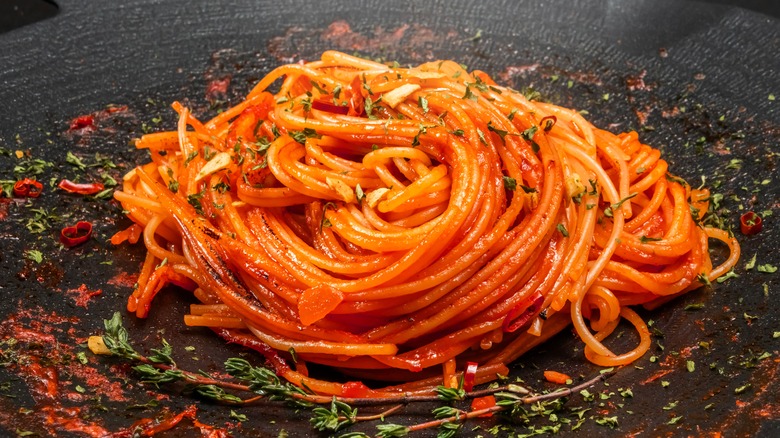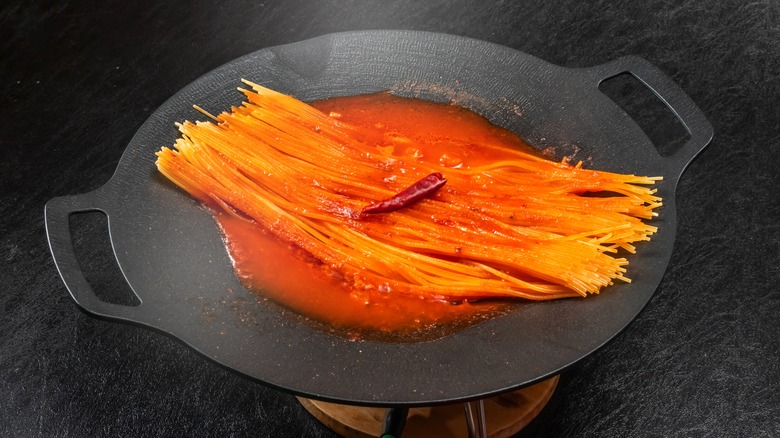Despite Its Name, Assassin's Pasta Has Underwhelming Origins
Spaghetti all'assassina (translated as "assassin's spaghetti") doesn't technically involve murder, but the title of the Italian staple does spark some clever wordplay connected to its not-so-threatening origin and unconventional cooking technique. The unique pasta recipe originated in Bari, Italy, and its history is a bit foggy. What we know for sure is that it debuted to the public in 1967 at the restaurant Al Sorso Preferito. According to an expert on the region's culinary scene, the restaurant's owners found the recipe. A rotisserie once lived next door to Al Sorso Preferito, and the owners allegedly discovered a recipe for spaghetti all'assassina when the adjoining business closed.
However, according to restaurant buffs and historians, chef Enzo Francavilla of Al Sorso Preferito might have created the traditional pasta dish by accident. Depending on who you ask, the namesake comes from two culinary mishaps. Apparently, Francavilla burned (or "killed") a spaghetti dish so badly that extra red pepper flakes were used to save it. Thus, a spicy creation worthy of the "killer pasta" moniker was born. Another account even connects the title to customers' jokes that the flaming hot spices were the chef's way of "killing" them. Regardless, spaghetti all'assassina unexpectedly became a house favorite and is still on the restaurant's menu today.
The pasta needs to suffer to become killer
None of the origin stories for assassin's spaghetti involve an actual crime (other than being guilty of tasty innovation). But the dish is fiery, scorched, and made with a special technique common to risotto where pasta is subjected to "suffering" with only small increments of liquid added at a time. Unlike risotto, spaghetti all'assassina requires caramelization and intentional burning. Instead of boiling the pasta, the key is to repetitively add batches of broth — made from water, salt, pepper, sugar, tomato paste, and tomato purée — as the noodles absorb the liquid and begin sticking to the pan.
Of course, the peppery spices are not forgotten. Before cooking, red pepper is added to an oily pan for a heat boost. The process involves a lot of TLC as you stand by rotating pasta, adding liquid, and crisping the noodles. Just how "killer" the dish turns out to be is completely up to the chef's preference for spices and charring, but most recipes for spaghetti all'assassina are the same at their core. In fact, the dish is so popular in Italy that it has an academy in its honor. It's a recipe that will have you eating spaghetti like a true Italian, and although it doesn't involve literal assassins like the title alludes, pasta aficionados would say it's to die for.

